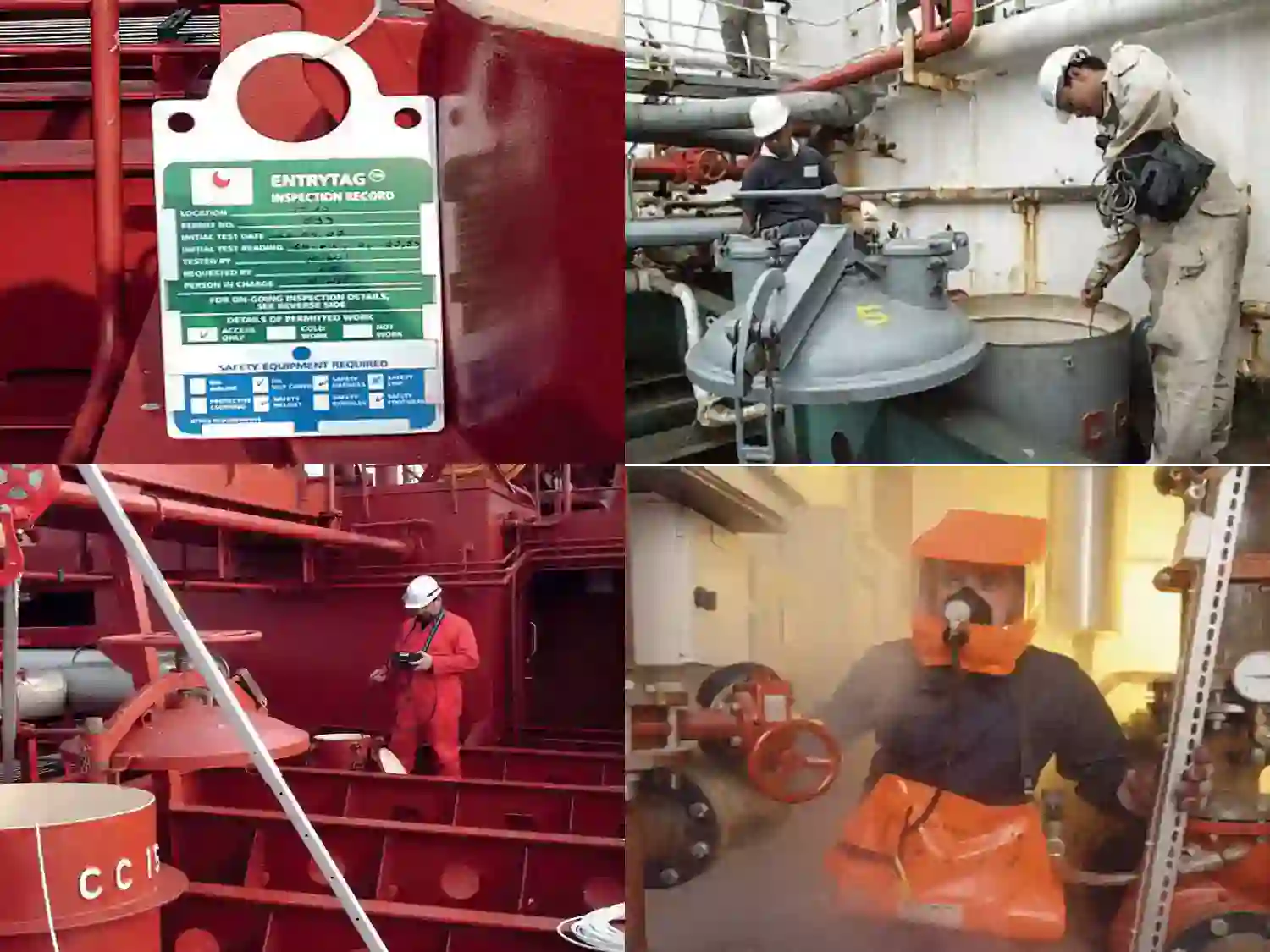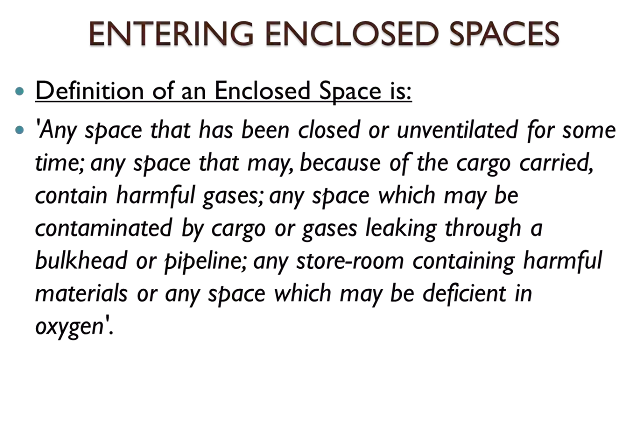
ENTERING ENCLOSED SPACES
ENCLOSED SPACES definition

Enclosed spaces should not be entered without correct authorization from the Ship’s Master or Officer in charge. As per the Code of Safe Working Practice (CSWP) entry should preferably be made under a ‘Permit to Work’ system or monitored by a safety checklist.
Prior to entry, the following suggested line of action should be taken:
1) Obtain correct authorization from the Chief Officer.
2) Ensure that the space has been well ventilated and tested for oxygen content and/or toxic gases.
3) Check that ventilation arrangements are continued while persons are engaged inside the space.
4)Ensure that rescue and resuscitation equipment is available and ready for immediate use at the entrance to the space.
5)Has a communication system been established and tested between the persons engaged in the space and the standby man outside the space?
6) A responsible person is designated as a standby man to be in constant attendance at the entrance to the space while persons are engaged inside.
7) Ensure the space is illuminated before entry and that any portable lights being employed are of the appropriate type.
8) Are there arrangements to regularly test the atmosphere inside the space in operation?
9) Is the ‘Permit to Work’ displayed at the entrance of the space?
10) Have operational personnel been briefed if withdrawal from the space becomes necessary?
– When the atmosphere is known to be unsafe entry should not be made into the space.
– When the atmosphere is suspect, the following additional safety precautions should be
observed with the use of breathing apparatus:
11) Ensure that the wearer of breathing apparatus is fully trained in its use.
12) Thorough checks on the breathing apparatus equipment must be made and the mask seal on the face of the wearer must be a proper fit.
13) The standby man should monitor the times of entry and exit of all personnel to allow adequate time for leaving the compartment.
14) Rescue harness and lifelines must be worn and if the low-pressure alarm is activated persons should leave the space immediately.
15) Operational personnel should never take off the mask of the breathing apparatus when inside the space.
16)In the event of communication failure or ventilation breakdown all persons inside the space should withdraw immediately.
17) The function of the person on standby, outside the space, is to raise the alarm in the event of emergency. He should not attempt to affect a rescue on his own.
18) Emergency signals and communications must be effective and understood by all parties involved.
NB All equipment including Portable lights and radio communication equipment must be “approved safe type” when entering spaces which may have a volatile (explosive) atmosphere.


